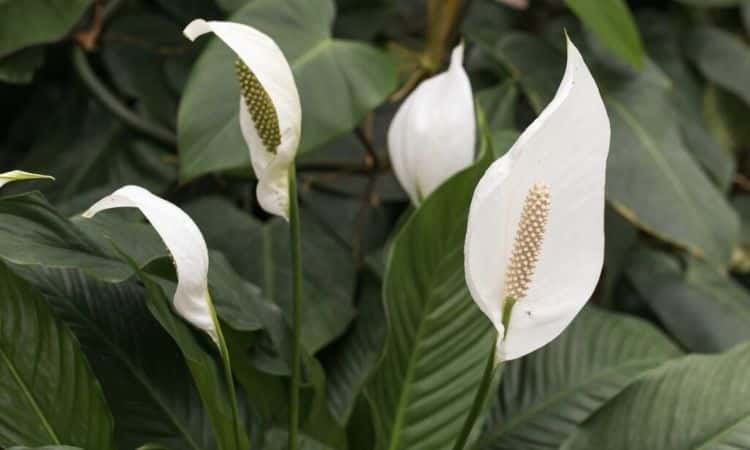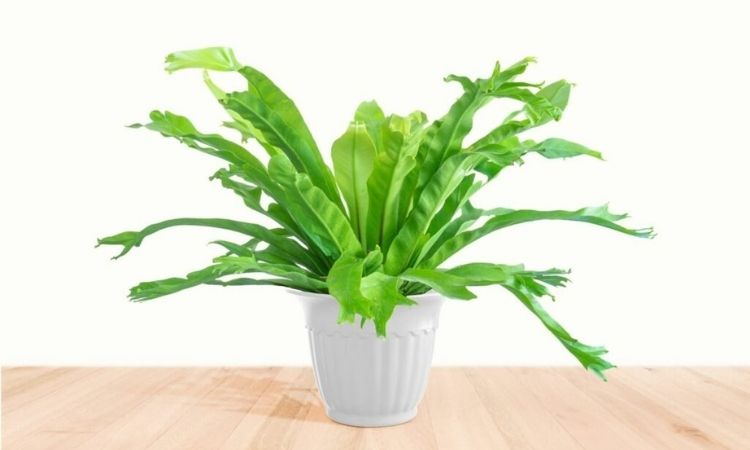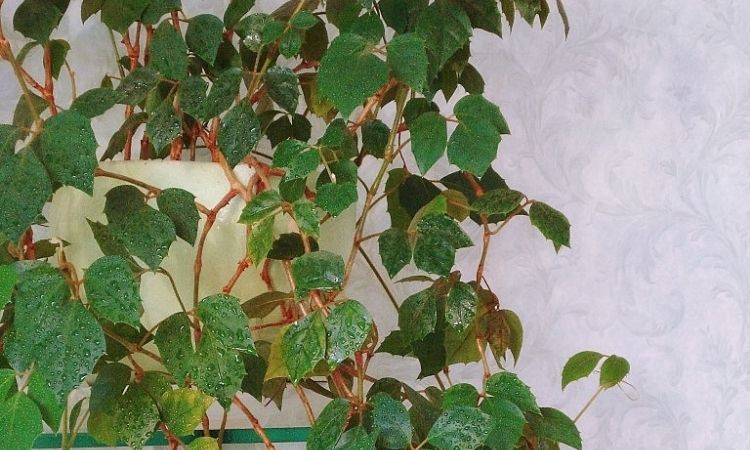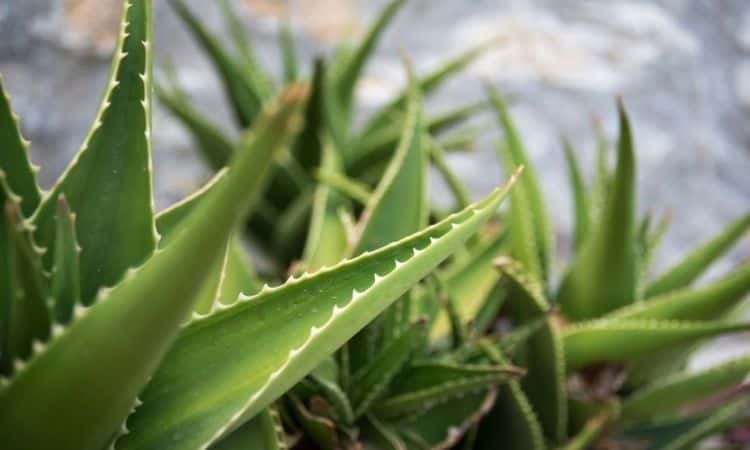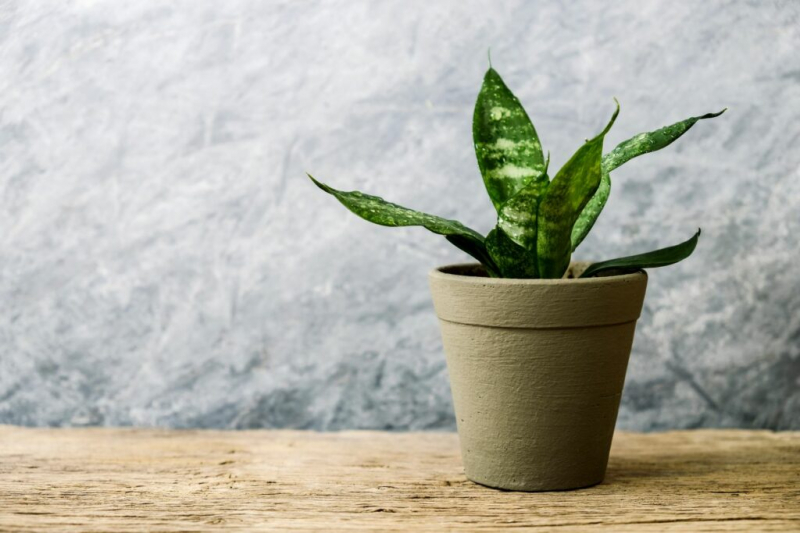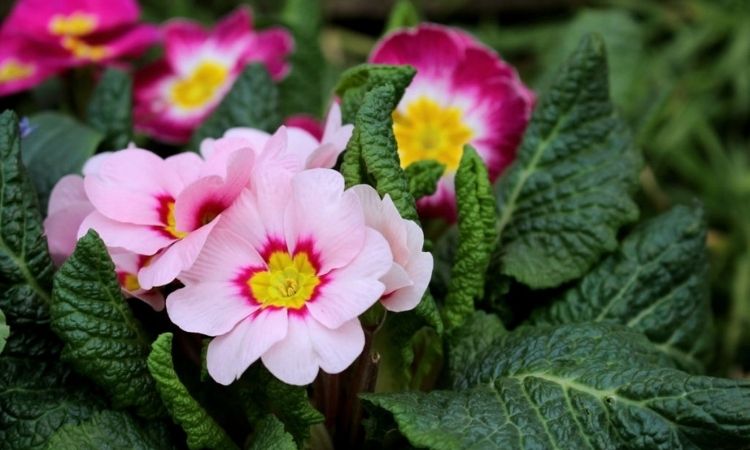Care Spathiphyllum: Propagation And Location Of The Peace Lily
With its elegant and timeless appearance, the peace lily (Spathiphyllum) fits into any room. Even for inexperienced amateur gardeners, the plant is an excellent choice.
But did you know that different monocotyledonous flowering plants in the family Araceae differ in growth height and leaf coloration? We reveal how to properly care for Spathiphyllum, also called sheath leaf or leaf flag, and in what location the Spathiphyllum feels comfortable.
Spathiphyllum: flowering and properties
Table of Contents
Unifoliate grows in the form of a horst with a height of 30-150 centimeters, depending on the variety. The houseplant has decorative flowers and leaves.
The leaves appear in a rich dark green, a beautiful sheen on the upper side of the leaf, and an elliptical shape. The variety-specific, brilliant white to cream-colored flowers stand out on the dark green leaves.
The white leaf is a sheathing leaf that surrounds the actual, bulbous inflorescence. This flower shape is typical of arum family plants (Araceae). Flowers can usually be expected between June and September. Depending on the variety and timing, the flowers can give off a pleasant light and sweet fragrance.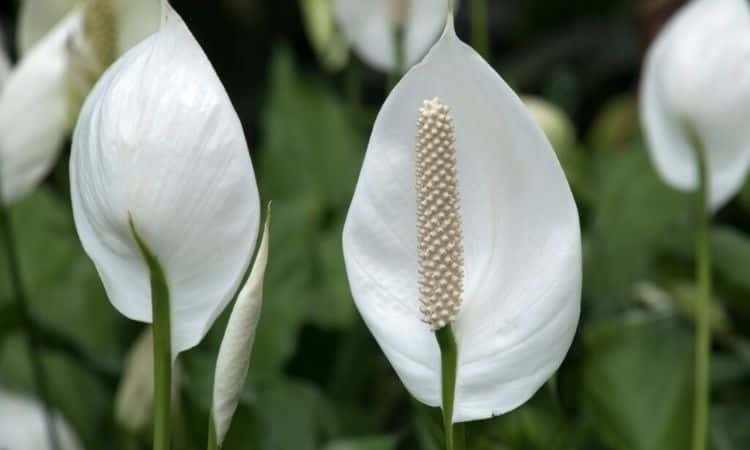
The most beautiful Spathiphyllum species and varieties
Species and varieties of sheath leaf differ in their growth height, as well as in flower shape and color. The genus Spathiphyllum includes over 50 different species. The most popular species Spathiphyllum floribundum and Spathiphyllum wallisii.
The varieties of the species Spathiphyllum floribundum are characterized by particularly large flowers and a growth height of over 20 in.
You Might Like Do Peace Lilies Like to be Root Bound
The varieties of this species have much smaller flowers and reach a growth height of 12 in.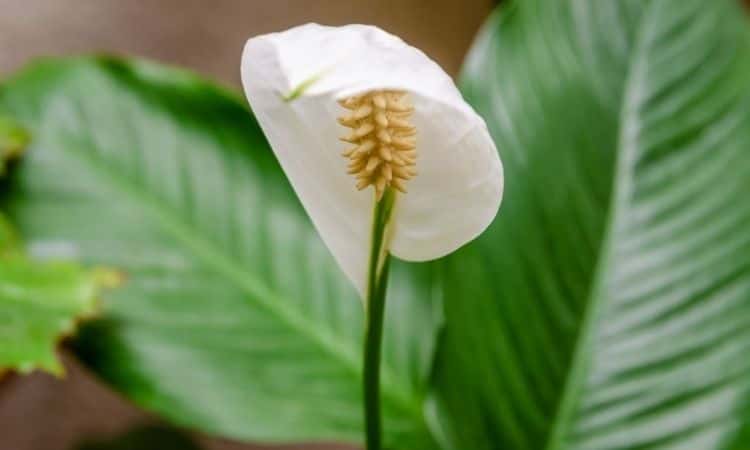
Most of the Peace Lily sold are hybrids, crosses of different species.
- Spathiphyllum floribundum Chopin: Spathiphyllum floribundum ‘Chopin’ is just the right variety for those looking for a simple and elegant peace lily. This variety has dark green leaves and the flowers are adorned by brilliant white bracts. Overall, the ‘Chopin’ variety can reach a maximum height of 23 in.
- Spathiphyllum wallisii Gemini: The variety Spathiphyllum wallisii ‘Gemini’ is a specialty among leafy plumes: The leaves are covered with irregular white stripes. Thus, the variety captivates not only with the white to cream flowers but also with decorative leaves. ‘Gemini’ reaches a growth height of about 20 in. and thus belongs to the compact varieties.
- Spathiphyllum wallisii Variegata: The cultivar Spathiphyllum wallisii ‘Variegata’ is very similar to the cultivar ‘Gemini’. However, its leaves are even more interspersed with white areas. The height of growth is about 23 in.
- Spathiphyllum wallisii Sensation: This variety lives up to its name. Spathiphyllum wallisii ‘Sensation’ is one of the largest sheath leaf varieties. With a growth height of over 60 in, it can be excellently cultivated on the ground or a small pedestal.
- Spathiphyllum Pearl Cupido (hybrid): The hybrid ‘Pearl Cupido’ is characterized by particularly dark green, lance-shaped leaves. These can reach up to 36 in. in length, making ‘Pearl Cupido’ a tall-growing variety.
- Spathiphyllum Sweet Paco (hybrid): The exceptional feature of the ‘Sweet Paco’ variety is its intense and pleasantly sweet fragrance. This fragrance is emitted by each of the bright white flowers for about half a day after blooming. This makes this variety special among the sheathing leaves.

Planting Spathiphyllum: location and substrate
Do you want a plant in a room that is too dark for many plants? Then the Spathiphyllum is just the right choice. Spathiphyllum is exceptionally shade tolerant. Nevertheless, you should try to provide the plant with as much light as possible. After all, the lighter the plant will get, the stronger it will grow. Direct sunlight, on the other hand, is not well tolerated by the Peace Lily, which is why a window facing north, for example, is very suitable.If your Spathiphyllum grows very slowly and the leaves become increasingly dark green, you should move the Peace Lily to a brighter location and observe whether the plant feels more comfortable there. On the other hand, if the plant gets brown tips, this is an indication that the plant is exposed to direct sunlight at times. The Peace Lily feels most comfortable at room temperatures of 18 to 25 °C. Increased humidity promotes the development of the plant, which is why the bathroom is often a suitable location.
Once a suitable location has been found, it is best to plant the Spathiphyllum in a pot in the spring. When choosing a planter, a container with a hole for draining excess water should be used. Spathiphyllum is frugal with regard to the soil used. A high humus content and good aeration of the root area are advantageous here.
What to consider with the peace lily?
In general, the Spathiphyllum is the optimal plant for beginners or all those who actually do not have a green thumb. Since the Spathiphyllum is at home in rainforests, it appreciates high humidity. Even though it tolerates temporary dry air well, it is advisable to spray the Peace Lily two to three times a week with some low-lime water, especially in winter. So that the beautiful, green shiny leaves do not get dusty and hindered in photosynthesis, you can occasionally wipe them with a damp cloth.
Watering and fertilizing Spathiphyllum
According to the origin of the Spathiphyllum, you should always keep the substrate around the root ball moist. But here it is important to note that waterlogging does not occur. Therefore, excess water in the planter should be removed as soon as possible. Rainwater is excellent for watering. If you do not have this at hand, you can also use mineral water.
If you pay attention to a good supply of nutrients with Spathiphyllum, you can expect healthy growth and many flowers. To support the formation of flowers, we recommend that you fertilize your Spathiphyllum regularly between spring and late summer. A biological liquid fertilizer is particularly suitable for this. 
Repotting Spathiphyllum
Depending on how fast your Spathiphyllum grows, you should report it every two to three years. A suitable time for this is spring or early summer through June. A pot with a hole to drain excess water is suitable as a new planting container. The pot should be about four inches larger in diameter than the previous one.
For a long-lasting supply of nutrients, we recommend adding a granular fertilizer with a long-term effect on the planting substrate. Phosphorus in particular is important for abundant flowering.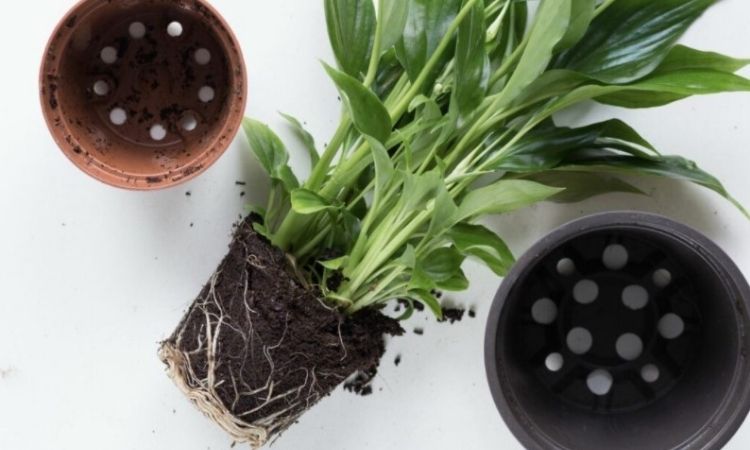
Prune Spathiphyllum
Cutting back is not necessary for Spathiphyllum and is not well tolerated by the plant. Older leaves die over time and can be removed periodically. A sharp pair of scissors is suitable for this purpose, and you can use them to remove the dying leaf at the base of the stem.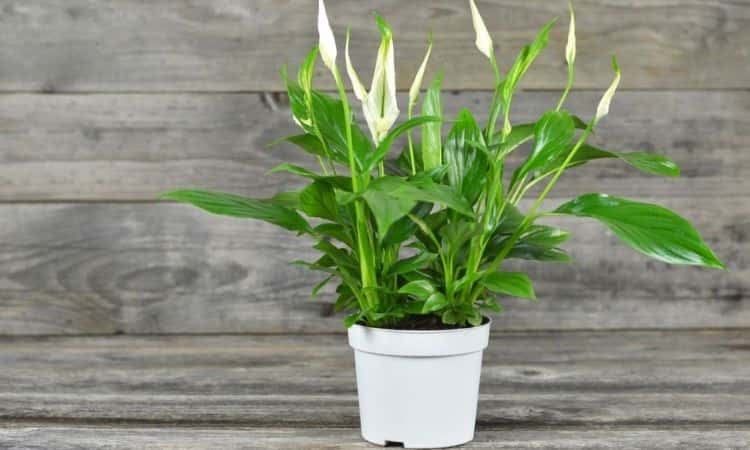
Diseases and pests of the peace lily
The Spathiphyllum is not very susceptible to diseases and pests. In rare cases, there is an infestation of aphids. Especially in warm rooms, the pests multiply strongly. Therefore, especially in winter, you should regularly inspect your peace lily for infestation by pests.
Why does my Spathiphyllum get yellow leaves?
If the leaves of your Spathiphyllum turn yellow there are different reasons:
- Nitrogen deficiency: uniform lightening of the leaves and yellow discolored older leaves.
- Solution: weekly use of a biological liquid fertilizer, which is specially adapted to houseplants.
- Waterlogging: Uniform paling of leaves and yellow tips.
- Solution: waterless and remove excess water.
- Too dry air: Yellow or brown leaf tips.
- Solution: Spray the plant with water.
- Iron or magnesium deficiency: young leaves lighten, leaf veins or center remains green.
- Solution: repot Spathiphyllum, be sure to water plant with acidic water (not tap water).
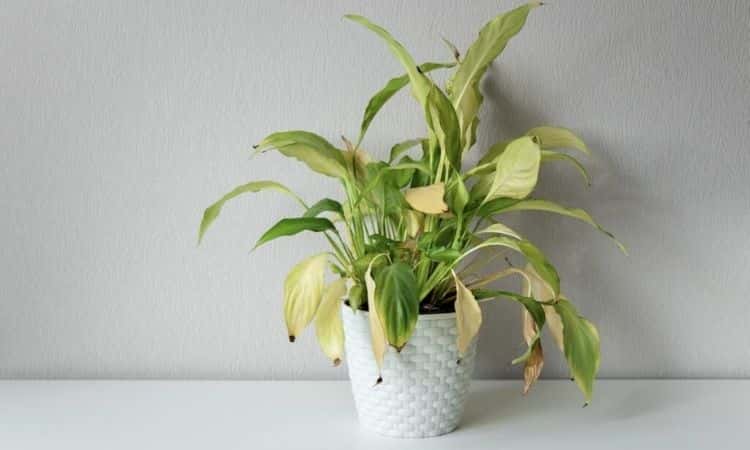
Why isn’t my Spathiphyllum blooming?
If a Spathiphyllum is no longer blooming, this can have different reasons:
- A location that is too bright or much too dark.
- Too little or incorrectly weighted nutrients: Pure nitrogen fertilizers can inhibit flower formation. The Spathiphyllum will also grow and bloom sparsely if it is undersupplied.
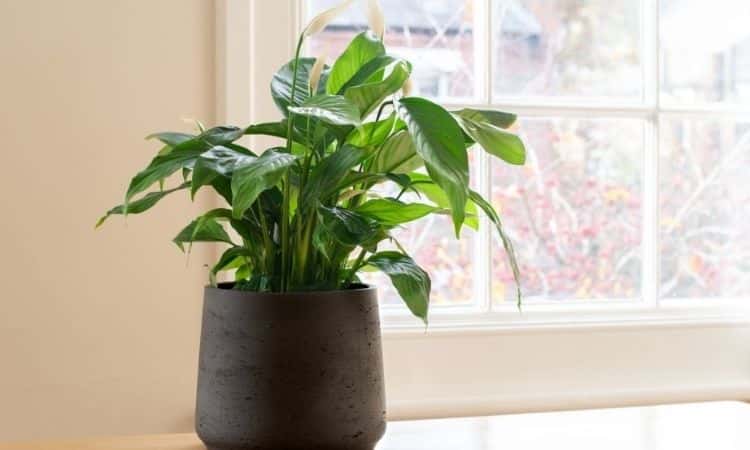
Propagating peace lily
Peace lily can be propagated well by dividing the cane. The best time for this is repotting. To do this, proceed as follows:
- Put on gloves: The sap of the uniflora can be irritating.
- Remove soil from the roots and rhizomes (thickened storage shoots).
- Select rhizome with 3 – 4 leaves and roots and cut off with a sharp knife.
- Plant rhizome in another pot and water.
- Care for offshoot in the same way as the mother plant.
- After a few weeks, the new peace lily will grow.
Is the Spathiphyllum is poisonous?
Yes, spathiphyllum is mildly toxic. All plant parts of the Peace Lily contain mucous membrane irritants and oxalic acids, which can cause skin irritation if they come into contact with plant sap, among other things. For this reason, you should prevent children or pets from swallowing plant parts.
Another low-maintenance and very decorative houseplant is the Swiss Cheese Plant. This tropical plant can also be cultivated in somewhat darker rooms.
